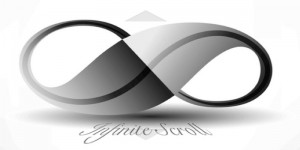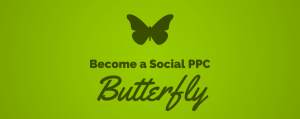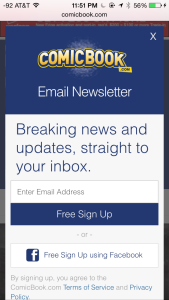If there ever was a VUCA era, this is it. Volatility, uncertainty, complexity, and ambiguity are being felt by people and organizations everywhere. Employee experience design has become more important than ever in supporting employee wellness and nurturing workforce performance.
When faced with change, individuals experience a variety of emotional stages, ranging from anxiety and fear to complacency and moving forward. In most instances, change happens at the organizational level and fails to acknowledge and adapt to the experience of the individual.* An organization’s culture has the power to suppress or support its employees during uncertain times, such as the ones we find ourselves in today. What employers should know is that their employee experience, particularly during difficult times, has real consequences on employee performance and business outcomes.
Employee experience by design
The employee experience is the sum of every interaction an employee has with an organization—from discovering the employer brand, to the application and onboarding process, through to the interactions with peers and leaders. The sum of these touchpoints shapes the employee experience and creates workplace culture. So why does the employee experience design matter? Because it impacts your bottom line. Organizations with healthy cultures are 1.5 times more likely to experience revenue growth of 15 percent or more over three years and are 2.5 times more likely to experience significant stock growth.
In most organizations, the employee experience forms organically. Great! Well, not necessarily. With the absence of intentional and thoughtful design, the employee experience often perpetuates undesired behaviors and breeds negative personal and business outcomes. Organizations that do not consider how their employees are going to live the culture are at risk of creating inefficiencies and a disconnect among their workforce.
Best practices teach us that by taking a two-pronged, top-down and bottom-up approach, organizations can ensure that their goals are achieved while making employees feel part of the process—increasing their buy-in and readiness to adopt new practices.
Top down: organization and leadership make decisions based on their values
Bottom up: employees have their own unique motivators, needs, concerns, and point-of-view
For the employee experience design to work, both sides need to be understood and aligned. That doesn’t mean that the organization sacrifices its goals to ensure employee happiness. Employee happiness and satisfaction are outcomes of a culture in which there is an overlap between the organization’s goals and the personal and professional goals of its people.
Intentional employee experience design replaces traditional thinking and manager bias with listening and an understanding of what employees actually care about. It requires direct employee feedback to understand the nuances of their experience. Organizations need to ask employees what they’re seeing, feeling, and experiencing—and use the insights to co-create a user-centric system that drives an employee experience design that’s in line with what your leaders are working to achieve—ideally this is also in-sync with your customer experience. While technology is a great enabler to this type of information collection, it is only one tool in the toolkit. Organizations should strive to provide multiple channels such as: 1:1 conversations, manager training, focus groups, committees, etc. Any avenue through which employees can express their feedback will be beneficial, however the right mix of channels is dependent upon the organization.
Leaders deciding what their employees need based on their own narrative is no longer the model. Today, it’s a conversation—one based on professional empathy and the balancing of business goals with the needs of employees.
Organizations impact human wellness, which impacts our behaviors and determines how we perform at work.
How well an employee’s wellness is served impacts their behavior and performance. In cultures where peers celebrate each other’s wins, knowledge-share, and support innovative thinking, employees are more resilient to turbulence and change. This type of positive workplace environment also supports employees in their personal lives, making them happier overall.
The 8 pillars of wellness
Employee experience design impacts all elements of human wellness:
- Financial
- Environmental
- Emotional
- Social
- Spiritual
- Physical
- Intellectual
- Occupational
Organizations touch each of these pillars, and in turn, each pillar relies on the rest for complete wellness stability. This is why employee experience design is so important. Wellness is in fact so critical that there is a dedicated global wellness day at work which aims to make employee well-being a focus of every organization.
In a time of crisis, such as the one we find ourselves in today, employees may require additional encouragement to achieve balance among their pillars of wellness in order to perform well at work. Not only that, the organization must support its leaders as they demonstrate ways to promote balance among their teams.
Professional growth and development
As you think about your employee experience design, remember to incorporate professional development into its fabric.
Today’s workforce demands working conditions that support their career pursuits and offer tools for success. Gone is the notion of climbing the corporate ladder. Employees now aren’t afraid to make lateral moves or join another organization to get the experience (professional and cultural) that they want.
Only 30 percent of employees report feeling encouraged to grow with the company. Not only can this lead to disengagement, it can also cause attrition. To keep the talent you worked so hard to attract, think about what your employees’ career ambitions may be. Better yet—ask them. Find out what they need so that you can better serve their wellness and promote optimal performance. You may find that in today’s VUCA environment, your employees needs have changed. They are now likely being asked to do more with less and may be taking on tasks that are new to them—causing stress and derailment from their anticipated career path. Being empathetic to their fluctuating needs and asking them how you can support them through times of change will be paramount to retaining talent and ensuring their (and the organization’s) success.
Planning the experience
Plan to have a plan. Then, plan for it to go sideways. If the pandemic has taught organizations anything, it’s that anything can happen—and suddenly.
In your employee experience design, adopt an agile methodology. Find systems of working that serve the organization and its employees, regardless of what happens in the future. This may involve some creative thinking and foresight. For instance, did your organization have a pandemic-ready plan in place that allowed for a smooth transition to remote work? Were sales targets adjusted to reflect the sudden shift in the market? Have your employees been armed with resources to help them navigate the changing world and workforce? For organizations with an agile employee experience design strategy, being able to adapt the processes already in place allowed them to respond to evolving business priorities and employee needs. Conversely, those with multi-year plans were stuck with inflexible strategies that hindered adaptation. For these same companies, attempting a sudden pivot in strategy can induce analysis paralysis—whereby the overthinking of the situation and anxiety over change management causes inaction and subsequently engagement failure. Overall, organizations without agile engagement strategies have struggled to adapt, putting a strain on employee positivity and productivity.

An organization’s approach to its employee experience design will depend on its size now and its plan to grow. As you set out to design the experience and nurture the culture you’re building, remember to keep your finger on the pulse of the frontline employee experience. As you hire, the needs of your teams are likely to evolve, and your strategy will need to mature along with them. This means that you’ll need to find a cadence of check-ins that work for your workforce. Touch base too often and you may add unnecessary stress on your employees—too far between and you may miss pivotal moments of real-time feedback that can make or break your employee experience. Sounds stressful, I know. But by continuing to map and understand the employee journey, your employees will tell you what you need to know to make informed strategic decisions.
Experiencing the business impact
In research conducted by Queen’s University Centre for Business Venturing, data collected over a 10-year period shows significant positive effects on businesses with engaged cultures:
- 15 percent greater employee productivity
- 26 percent less employee turnover
- 20 percent less absenteeism
- 30 percent greater customer satisfaction levels
- 65 percent greater share-price increase
- 100 percent more unsolicited employment applications
I don’t need to tell you that these percentages add up to significant dollars earned and saved.
Business & Finance Articles on Business 2 Community
(27)







